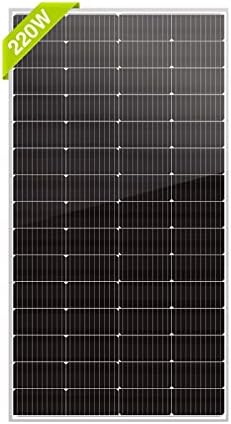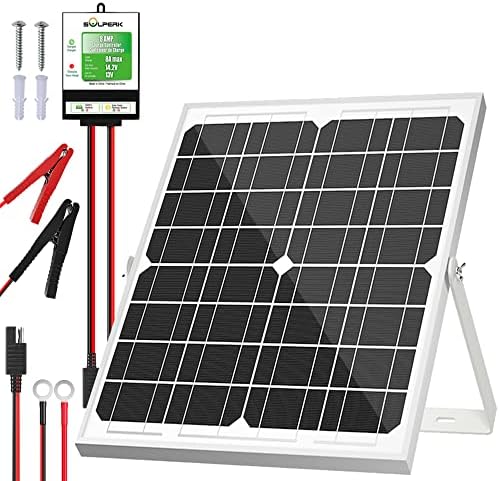Exploring Different Solar Panel Types: Benefits, Drawbacks, and Performance
Picture this: a serene cabin nestled deep in the heart of nature, away from the hustle and bustle of city life. As the sun rises, casting its warm golden rays upon the land, an off-grid enthusiast like myself revels in the knowledge that their energy needs are met entirely by the power of the sun. Living off the grid allows us to embrace sustainable living, and one of the key components of this lifestyle is harnessing solar energy through various types of solar panels. In this article, we will embark on an exciting journey to explore different solar panel types, understand their benefits, drawbacks, and performance. So, grab a cup of your favorite beverage and join me on this exhilarating solar adventure!
1. Monocrystalline Solar Panels
Starting our solar panel exploration on a high note, monocrystalline panels are known for their exceptional efficiency. These panels are made from a single crystal structure, usually silicon, allowing them to convert sunlight into electricity with unmatched precision. With their sleek black appearance, they are not only efficient but also aesthetically pleasing.
One significant advantage of monocrystalline panels is their space-efficiency. Due to their high efficiency, they require less surface area compared to other panel types, making them ideal for smaller spaces. Furthermore, their excellent performance in low-light conditions ensures they continue to generate power even on cloudy days. However, the drawback of monocrystalline panels lies in their cost, as they tend to be the most expensive option on the market.
Pro Tip: If you have limited space or want to maximize power generation, investing in monocrystalline solar panels can be a wise choice, despite their higher price tag.
2. Polycrystalline Solar Panels
As we venture further into the realms of solar panel types, polycrystalline panels shine brightly (both literally and metaphorically). Unlike their monocrystalline counterparts, polycrystalline panels are made up of multiple silicon crystals, resulting in a distinctive blue appearance. They offer a cost-effective alternative to monocrystalline panels while still maintaining respectable efficiency.
One of the notable benefits of polycrystalline panels is their affordability. With less silicon waste during the production process, they are often priced lower than their monocrystalline counterparts. Additionally, as technology advances, polycrystalline panels have continuously improved their efficiency, narrowing the gap between them and monocrystalline panels. However, they do tend to occupy more space, requiring a larger surface area to generate the same amount of electricity.
Pro Tip: If you have ample space on your property and are seeking an economical option that still provides decent performance, polycrystalline solar panels could be your best bet.
3. Thin-Film Solar Panels
As we wander down the path of solar panel exploration, we stumble upon a unique and innovative type: thin-film solar panels. These panels are distinct from their crystalline counterparts, as they are made by depositing a thin semiconductor layer onto a supporting material such as glass, plastic, or metal. This flexibility allows for creative applications and opens up possibilities beyond traditional solar panels.
One of the significant advantages of thin-film solar panels is their flexibility. This characteristic makes them ideal for curved surfaces, enabling unique installations that would otherwise be challenging or impossible with other panel types. They also perform well in high temperatures, making them suitable for regions with intense sun exposure. However, their lower efficiency compared to crystalline panels and the potential for degradation over time are notable drawbacks.
Pro Tip: Consider thin-film solar panels if you’re looking for a lightweight and flexible option, especially for unconventional installations or portable solar setups.
4. Bifacial Solar Panels
Our exploration of solar panel types leads us to the captivating world of bifacial solar panels. Unlike traditional solar panels that only absorb sunlight from the front side, bifacial panels harness light from both sides, capturing more energy from direct sunlight as well as reflected light on the rear side. This unique design sets them apart and offers distinct advantages in certain situations.
The primary benefit of bifacial panels is their enhanced power output. By capturing light from both sides, these panels can generate up to 50% more electricity compared to monofacial panels of the same size. This makes them particularly useful for installations on reflective surfaces such as white roofs or areas with light-colored terrain. However, their performance heavily relies on the surroundings and the amount of reflected light available.
Pro Tip: If you have access to a highly reflective environment or want to optimize power generation on suitable surfaces, consider the amplified capabilities of bifacial solar panels.
5. Concentrated Solar Power (CSP)
As our solar panel odyssey nears its end, we encounter a unique technological marvel known as Concentrated Solar Power (CSP). Unlike the previous panel types that directly convert sunlight into electricity, CSP employs mirrors or lenses to focus sunlight onto a receiver. This concentrated heat is then utilized to produce steam, which drives a turbine to generate electricity.
CSP offers unparalleled storage capabilities, as excess heat can be stored and used to generate electricity during periods of low sunlight. This feature allows for continuous power supply, even when the sun sets or on cloudy days. However, CSP requires vast amounts of space and tends to be more suitable for large-scale power plants rather than residential or small-scale off-grid setups.
Pro Tip: If you’re thinking big and have access to vast open areas, Concentrated Solar Power can be an exciting option for sustainable energy production.
Embarking on this solar panel expedition has undoubtedly shed light on the vast array of options available to us as off-grid enthusiasts. Each solar panel type offers distinct advantages and drawbacks, catering to unique needs and preferences. By aligning our energy requirements with the most suitable panel type, we can harness the power of the sun in the most efficient and effective way possible.
As we conclude our journey through solar panel types, let’s remember that sustainable energy is not only environmentally friendly but also economically viable in the long run. So, whether you opt for the efficiency of monocrystalline panels, the affordability of polycrystalline panels, the flexibility of thin-film panels, the amplified output of bifacial panels, or the grandeur of Concentrated Solar Power, rest assured that you are contributing to a greener future.
Pro Tip: When planning your solar panel installation, consider factors like available space, budget, energy requirements, and environmental conditions to make an informed decision about the most suitable solar panel type for your off-grid adventure.
Now, armed with newfound knowledge, go forth and embrace the power of the sun, for it holds the key to a sustainable and vibrant off-grid lifestyle!



